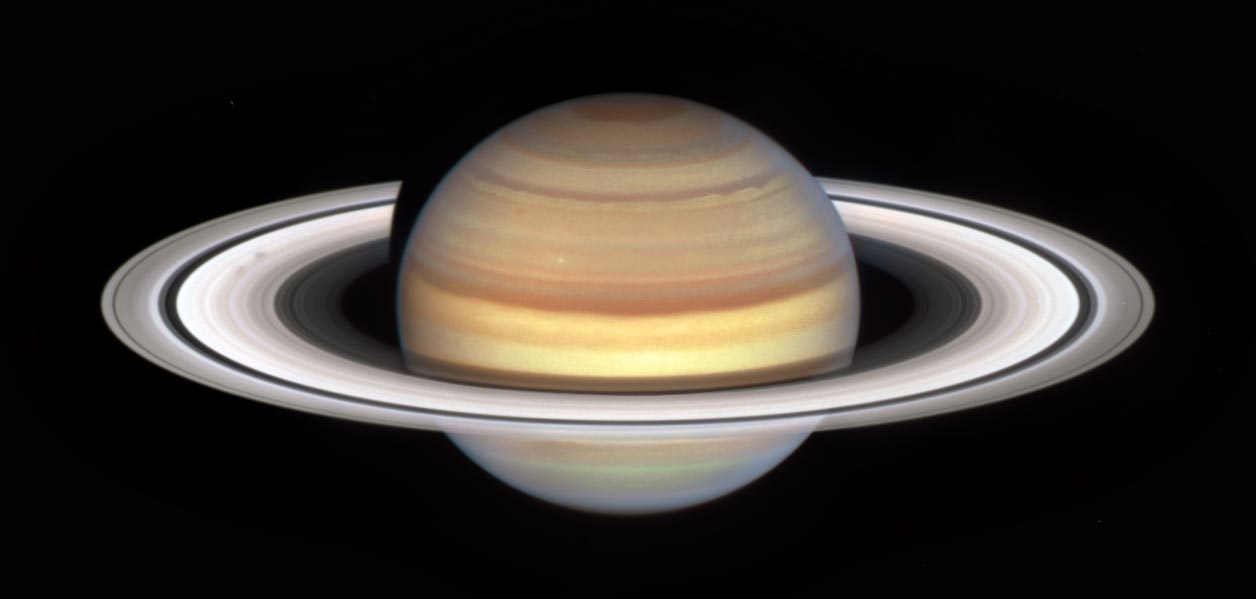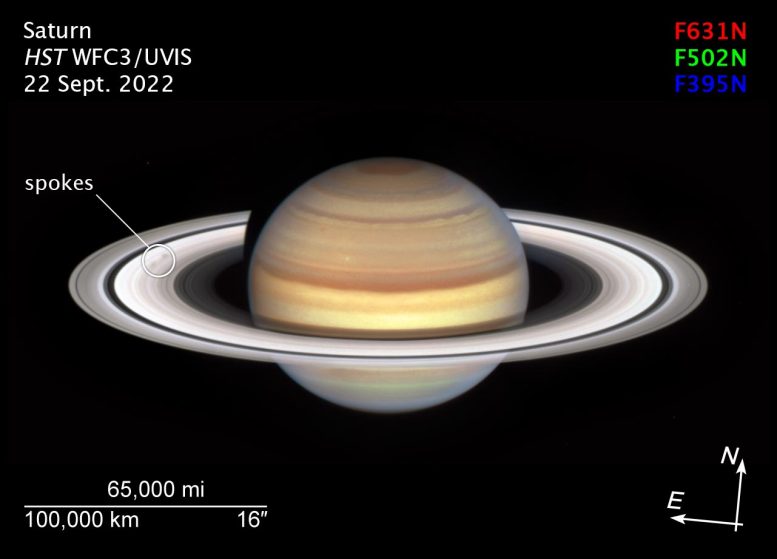By European Space Agency (ESA)February 14, 2023
NASA’s Hubble Space Telescope has observation time devoted to Saturn each year, thanks to the Outer Planet Atmospheres Legacy (OPAL) program, and the dynamic gas giant planet always shows us something new. This latest image heralds the start of Saturn’s “spoke season” with the appearance of two smudgy spokes in the B ring, on the left in the image. Credit: Science: NASA, ESA, Amy Simon (NASA-GSFC), Image Processing: Alyssa Pagan (STScI)
Each year, the Hubble Space Telescope has observation time devoted to
The shape and shading of spokes varies—they can appear light or dark, depending on the viewing angle, and sometimes appear more like blobs than classic radial spoke shapes, as seen here. The ephemeral features don’t last long, but as the planet’s autumnal equinox approaches on May 6, 2025, more will appear. Scientists will be looking for clues to explain the cause and nature of the spokes. It’s suspected they are ring material that is temporarily charged and levitated by interaction between Saturn’s magnetic field and the solar wind, but this hypothesis has not been confirmed. Credit: Science: NASA, ESA, Amy Simon (NASA-GSFC), Image Processing: Alyssa Pagan (STScI)
The shape and shading of spokes varies — they can appear light or dark, depending on the viewing angle, and sometimes appear more like blobs than classic radial spoke shapes, as seen here. The ephemeral features don’t last long, but as the planet’s autumnal equinox approaches on May 6, 2025, more will appear.
Scientists will be looking for clues to explain the cause and nature of the spokes. It’s suspected they are caused by interaction between Saturn’s magnetic field and the solar wind, which also causes aurorae to appear on the planet. The hypothesis is that spokes are the smallest, dust-sized, icy ring particles being temporarily electrically charged and levitated, but this has not been confirmed.
Saturn’s last equinox occurred in 2009, while the Cassini
” data-gt-translate-attributes=”[{[{“attribute”:”data-cmtooltip”, “format”:”html”}]”>Cassinispacecraft was orbiting the gas giant planet for close-up reconnaissance. With Cassini’s mission completed in 2017, Hubble is continuing the work of long-term monitoring of changes on Saturn and the other outer planets.
For more on this topic, see Saturn’s Rings Are Acting Strange.



